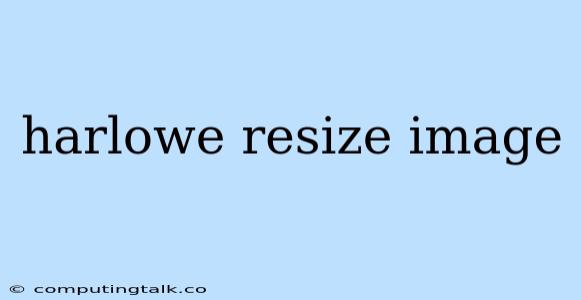Harlowe is a powerful scripting language used in Choice of the Dragon and other ChoiceScript games. It allows you to create complex, dynamic stories with a wide range of features, including image manipulation. One common task in game development is resizing images to fit different screen sizes or create specific visual effects.
Resizing Images with Harlowe
Harlowe offers several ways to resize images, each with its own advantages and limitations. Let's explore the most common methods:
The (resize) Macro:
This is the simplest and most versatile method for resizing images. It takes two arguments: the image path and the desired dimensions. For example:
(resize "path/to/image.jpg" 200 100)
This code will resize the image "path/to/image.jpg" to a width of 200 pixels and a height of 100 pixels.
Here are some important points to remember:
- The
(resize)macro retains the original aspect ratio of the image. If you specify different width and height values, the macro will scale the image proportionally, ensuring that it doesn't appear distorted. - You can use
(resize)with images stored locally in your game's files or images loaded from external sources. - The macro returns the resized image as a string, which you can then use to display the image in your game.
Example:
(set: $resized_image to (resize "images/character.png" 150 100))
(show: $resized_image)
This code will resize the image "images/character.png" to 150x100 pixels and then display it in the game.
The (display) Macro with width and height Attributes:
The (display) macro can also be used to resize images. Simply add the width and height attributes to the image tag:
(display: "images/background.jpg" width: 400 height: 300)
This code will display the image "images/background.jpg" with a width of 400 pixels and a height of 300 pixels.
Important Considerations:
- Unlike
(resize), the(display)macro does not retain the aspect ratio. If you specify different width and height values, the image may appear stretched or squashed. - The
(display)macro is suitable for resizing images directly when displaying them, but it doesn't create a new resized image for later use.
Example:
(if: $show_large_image)
(display: "images/monster.jpg" width: 600 height: 400)
(else)
(display: "images/monster.jpg" width: 200 height: 150)
(end)
This code displays the image "images/monster.jpg" at a larger size if the variable $show_large_image is true, and at a smaller size otherwise.
Using CSS Styles:
If you're using a more advanced game framework that supports CSS, you can use CSS styles to resize images. This offers more flexibility and fine-grained control.
Example:
(set: $image_style to ".my-image { width: 250px; height: 200px; }")
(show: " ")
")
This code defines a CSS class named my-image with specific width and height values. It then displays an image with that class, applying the CSS styles and resizing the image accordingly.
Advantages of CSS:
- Allows for more complex resizing scenarios, such as responsive design, where images automatically adjust based on the screen size.
- Can be used to apply other visual effects, such as borders, padding, and rounded corners, alongside resizing.
Considerations and Best Practices:
- Performance: Resizing images can be computationally expensive. For performance optimization, it's recommended to pre-resize images to different sizes and store them in your game's files, rather than resizing them dynamically every time they are displayed.
- Aspect Ratio: Always consider the original aspect ratio of your images when resizing them. Maintaining the aspect ratio ensures that the images look natural and avoid distortion.
- Image Quality: When resizing images, you may lose some image quality. This is especially noticeable when scaling down images. Choose the appropriate resizing algorithm and image format to minimize quality loss.
- File Size: Be mindful of file size when resizing images. Larger images can take longer to load and may impact game performance. Choose a suitable resolution and image format that balances quality and file size.
Conclusion
Harlowe provides versatile tools for resizing images within your ChoiceScript game. By understanding the different methods available, you can create engaging and visually appealing games with tailored image sizes and dimensions. Experiment with these techniques to find the best solution for your specific needs and game development goals. Remember to prioritize performance, aspect ratio, image quality, and file size when working with image resizing to create a smooth and enjoyable gaming experience for your players.
